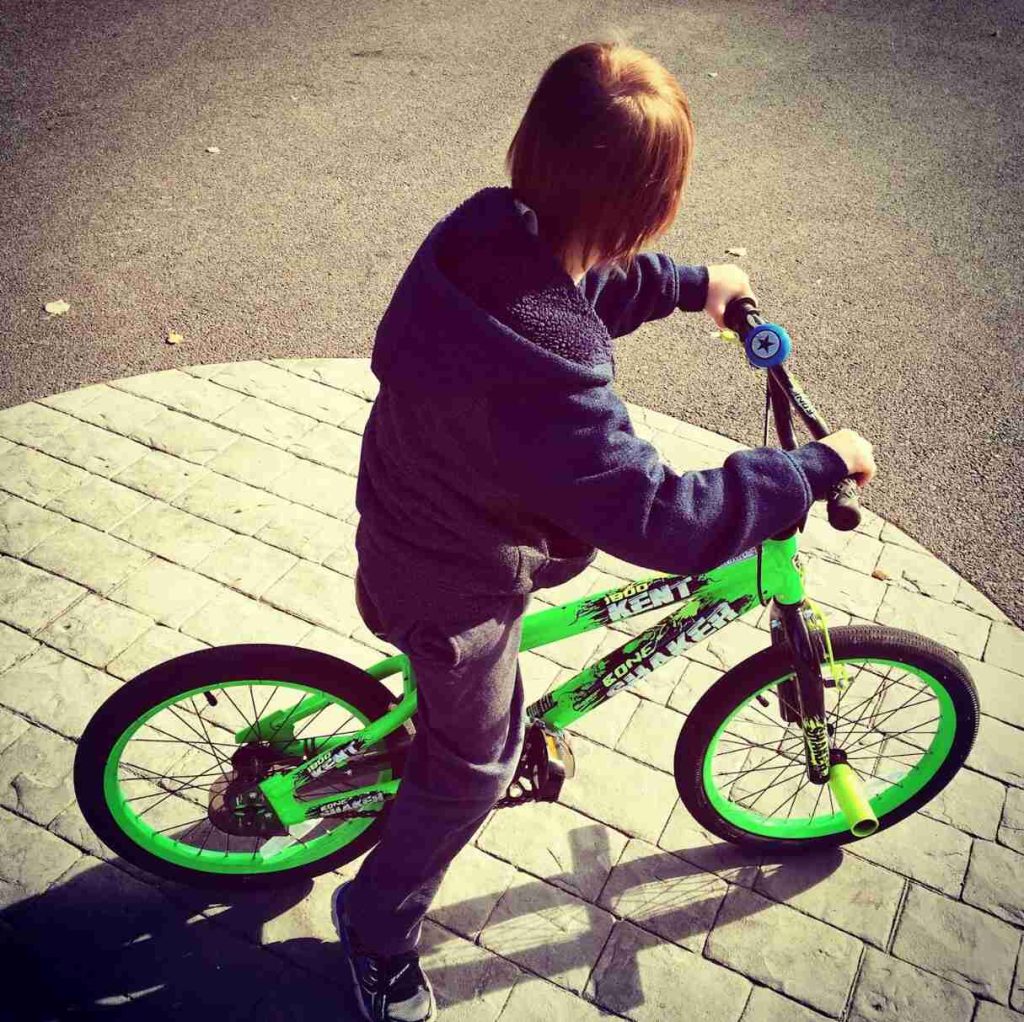Choosing the right kid’s bicycle is crucial for ensuring a safe, enjoyable, and memorable cycling experience for your child. With numerous options available, it can be overwhelming for parents to make the best choice. In this guide, we’ll outline fourteen essential considerations to help you select the ideal bicycle for your little one.
Bike Buying 101: Expert Advice on Finding the Ideal Bicycle
1) Finding the Appropriate Size
Selecting the correct size is paramount when choosing a kid’s bicycle. Unlike adult bikes, children’s bicycles are sized by wheel diameter rather than frame size. Consult a sizing chart like the one below to match the wheel size with your child’s height and inseam measurement:
| Child’s Height | Wheel Size | Inseam Measurement |
|---|---|---|
| 2’10” – 3’4″ | 12 inches | 14-17 inches |
| 3’2″ – 3’5″ | 14 inches | 16-20 inches |
| 3’5″ – 4’0″ | 16 inches | 18-22 inches |
| 4’0″ – 4’5″ | 18 inches | 20-24 inches |
| 4’5″ – 4’9″ | 20 inches | 22-25 inches |
Avoid the temptation to buy a larger size anticipating growth, as an oversized bike can be uncomfortable and unsafe. Ensure your child can straddle the bike with a slight gap between their groin and the top tube. Additionally, they should comfortably reach the handlebars and brakes without overstretching.
2) Prioritize Safety Features
Safety should be a top priority when choosing a kid’s bicycle. Look for features such as:
- Chain Guard: Prevents clothing, shoelaces, or fingers from getting caught in the chain.
- Quality Brakes: Ensure brakes are responsive and easy for small hands to grip.
- Non-Toxic Paint: Choose bicycles with non-toxic paint to avoid health hazards.
- Helmet: Invest in a well-fitting, high-quality helmet to protect your child’s head during rides.
3) Opt for a Sturdy Frame
Children can be rough on bicycles, so prioritize durability. Look for bicycles with sturdy, rust-resistant frames capable of withstanding playful activities and occasional falls.
4) Consider Gear Configuration
For beginner riders, a single-speed bicycle is ideal, as it is simpler to operate and lighter in weight. Geared bicycles are suitable for advanced riders engaging in off-road or hilly terrain adventures.
5) Mind the Weight
Choose a lightweight bicycle that your child can easily maneuver and lift. As a rule of thumb, the bike’s weight should not exceed 50% of your child’s weight to ensure comfortable riding and handling.
6) Check Warranty Coverage
Review the manufacturer’s warranty to ensure coverage for the frame and essential components. Look for lifetime frame warranties and limited warranties on parts for added peace of mind.
7) Evaluate Suspension Needs
Unless your child is into mountain biking, full suspension or suspension forks may not be necessary. These features add weight to the bike and can make maneuvering challenging, particularly on slopes.
8) Opt for Wide Tires
Wide tires provide extra cushioning and versatility, making them suitable for various terrains, including paved surfaces and light trails.
9) Ensure Comfortable Touch Points
Prioritize comfort for your child’s contact points with the bicycle:
- Saddle: Choose a cushioned saddle for comfort during long rides.
- Handlebars: Opt for grips that are easy to hold and control, with appropriate cushioning for small hands.
- Pedals: Select pedals with a rough surface to prevent slipping and ensure a secure grip.

10) Check Brake Accessibility
Ensure the brake levers are easily accessible and operable by your child’s hands. Handlebar brakes are preferred over coaster brakes, as they offer greater control and safety.
11) Gradually Transition from Training Wheels
While training wheels provide stability for beginners, gradually raise them as your child gains confidence in riding. Eventually, remove them to promote balance and independence.
12) Consider Visual Appeal and Accessories
Select a bicycle that reflects your child’s personality with vibrant colors and attractive decals. Enhance the biking experience with accessories like water bottle cages, reflectors, tassels, and bells.
13) Invest in a Kickstand
A kickstand is a convenient accessory for storing and preventing the bike from falling when not in use. Consider adding one once your child has mastered riding without training wheels.
14) Balance Budget and Quality
While budget is a consideration, prioritize quality and safety over cost. Invest in a high-quality bicycle that offers durability, comfort, and features conducive to an enjoyable riding experience.
Conclusion
Choosing the perfect kid’s bicycle requires careful consideration of size, safety features, durability, and comfort. By following the fourteen essential considerations outlined in this guide, you can ensure that your child’s cycling journey begins on the right track. Remember to prioritize safety, quality, and suitability for your child’s needs and preferences. Happy cycling!
References:
Consumer Reports – How to Choose the Right Kids Bike
National Highway Traffic Safety Administration – Bicycle Safety
American Academy of Pediatrics – Bicycle Helmets: What Every Parent Should Know
